Combination feeding—offering both breast milk and formula—is a flexible and empowering choice for many families. Whether you're returning to work, navigating latching difficulties, or simply balancing personal wellness, combo feeding can meet your baby's needs while helping preserve your breast milk supply. In this comprehensive guide, we explore how to successfully supplement with formula while maintaining optimal lactation.
Understanding Combo Feeding and Milk Supply Dynamics
Combo feeding can easily disrupt your milk production if not approached strategically. Since lactation works on a supply-and-demand principle, replacing too many breastfeeds with formula can quickly lead to reduced supply. Our goal is to offer detailed, evidence-backed methods for incorporating formula without triggering a supply drop.
Establish a Strong Breastfeeding Foundation First
Before introducing formula, establish a consistent breastfeeding routine. Aim for 8–12 nursing sessions per 24 hours during the first few weeks to build a resilient milk supply. Once breastfeeding is well-established (typically by 4–6 weeks postpartum), you can begin supplementing gradually without destabilizing production.
Tips:
- Always breastfeed before offering formula in the early days of combo feeding.
- Avoid skipping nursing sessions without replacing them with pumping.
Smart Supplementation Strategies to Protect Supply
1. Gradual Introduction
Introduce formula slowly—start with one bottle every 24–48 hours. This allows your body and baby to adjust and prevents sudden hormonal shifts that reduce lactation.
2. Prioritize Pumping
Each missed breastfeeding session should be replaced with pumping. Use a double electric breast pump for efficiency and stimulate both breasts simultaneously to mimic the nursing pattern.
Pro Tip: Pump for 15–20 minutes after a feeding to encourage additional milk production, even if baby has emptied the breast.
3. Responsive Feeding
Let baby nurse when interested—even brief suckling triggers oxytocin and prolactin, which support milk production. Use skin-to-skin contact liberally, as it naturally boosts milk-making hormones.
Scenario-Based Combo Feeding Approaches
Combo Feeding With Low Milk Supply
Low supply doesn’t mean breastfeeding must end. You can sustain and even increase supply by doing the following:
- Pump after every formula bottle to mimic demand.
- Use power pumping (10 minutes on, 10 minutes off, repeated 3–4 times) once daily to trigger a production boost.
- Stay hydrated and nourished—milk is 90% water and sensitive to maternal nutrition.
Combo Feeding With Oversupply
When milk flow exceeds baby’s needs, combo feeding can actually relieve discomfort and simplify routines:
- Freeze extra milk for future use.
- Skip one or two sessions daily and replace with formula—but continue to pump briefly to avoid clogged ducts or mastitis.
- Monitor for signs of engorgement and adjust pumping to maintain comfort.
Combo Feeding for Working Parents
Returning to work doesn’t mean abandoning breastfeeding. With structured planning, your milk supply can remain robust.
- Pump during the workday every 3–4 hours to maintain output.
- Store milk safely using insulated bags and cold packs until it can be refrigerated or frozen.
- Breastfeed before and after work to reinforce bonding and stimulate hormones.
Combo Feeding at Night
Prolactin, the key hormone for milk production, peaks between 2–5 a.m. Night feedings are important for sustaining milk supply, but if you want more rest:
- Replace only one night session with formula at first.
- Pump once overnight—even a short session preserves hormone balance.
- Use hands-on pumping techniques to increase output while minimizing time awake.
Combo Feeding Pitfalls to Avoid
- Skipping Pumps: Missing a session without pumping signals the body to make less milk.
- Rapid Transition: Quickly replacing multiple feeds with formula can cause supply crashes and engorgement.
- Ignoring Baby's Cues: Combo-fed babies may have varying hunger patterns. Watch for early hunger signs like rooting or hand-sucking, not just crying.
- Over-reliance on Formula: Even one extra formula feed per day, if not balanced with pumping, can slowly reduce supply over time.
Nutritional Considerations: Matching Formula to Breast Milk
When choosing a formula, opt for:
- Iron-fortified formulas (recommended by pediatricians)
- Brands with DHA/ARA for brain and eye development
- Prebiotics and probiotics to support gut health
Always consult your pediatrician when selecting a formula, especially for babies with allergies, sensitivities, or preexisting conditions.











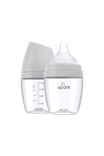
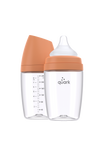
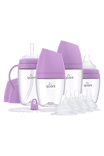
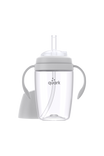

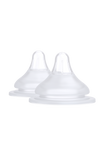





Leave a comment
All comments are moderated before being published.
This site is protected by hCaptcha and the hCaptcha Privacy Policy and Terms of Service apply.